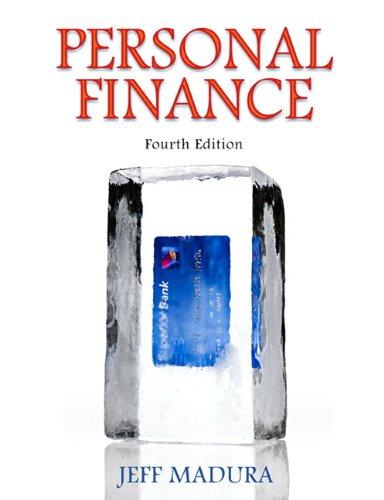Question
1. Given the following four projects and their cash flows, calculate the discounted payback period with a 5% discount rate. What do you notice about
1. Given the following four projects and their cash flows, calculate the discounted payback period with a 5% discount rate. What do you notice about the payback period as the discount rate rises? Explain this relationship.
| Cash Flow | A | B | C | D |
| Cost | $ 10,000 | $ 25,000 | $ 45,000 | $ 1,000,000 |
| Cash flow year 1 | $ 4,000 | $ 2,000 | $ 10,000 | $ 40,000 |
| Cash flow year 2 | $ 4,000 | $ 8,000 | $ 15,000 | $ 30,000 |
| Cash flow year 3 | $ 4,000 | $ 14,000 | $ 20,000 | $ 20,000 |
| Cash flow year 4 | $ 4,000 | $ 20,000 | $ 20,000 | $ 10,000 |
| Cash flow year 5 | $ 4,000 | $ 26,000 | $ 15,000 | $ - |
| Cash flow year 6 | $ 4,000 | $ 32,000 | $ 10,000 | $ - |
2, What is the IRR of the following set of cash flows?
| Year | Cash Flow |
| 0 | -4,000 |
| 1 | 1,500 |
| 2 | 2,100 |
| 3 | 2,900 |
3. For the cash flows in the previous problem, what is the NPV at a discount rate of zero percent? What if the discount rate is 10%? If it is 20%? If it is 30%?
Step by Step Solution
There are 3 Steps involved in it
Step: 1

Get Instant Access to Expert-Tailored Solutions
See step-by-step solutions with expert insights and AI powered tools for academic success
Step: 2

Step: 3

Ace Your Homework with AI
Get the answers you need in no time with our AI-driven, step-by-step assistance
Get Started


